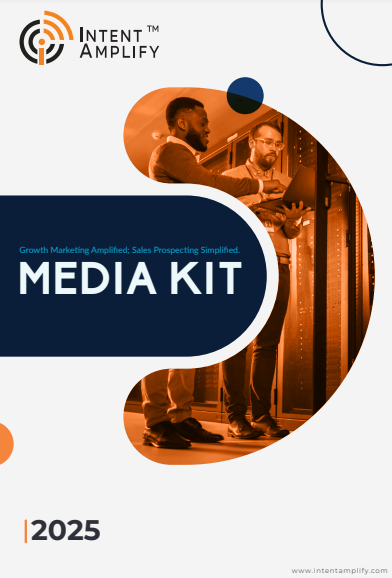
What Is Keyword Clustering? 7 Steps to Boost Your B2B SEO
- Last updated on: August 14, 2025
With the fast-paced B2B online market, ranking for a keyword is no longer sufficient. Search engines have now learned to discern context, intent, and relation between topics. This is where Keyword Clustering becomes important. It is a method of clustering related keywords into topical themes, enabling you to produce content that ranks for multiple keywords simultaneously.
For B2B businesses, Keyword Clustering provides two key benefits:
- It boosts organic visibility on multiple search queries.
- It makes content more aligned with purchasing intent.
Rather than pursuing individual, solitary keywords, this strategy enables you to own a whole topic space, positioning your business as the authority in your sector. Keyword Clustering optimization can enhance SEO effectiveness, limit keyword cannibalization, and attract targeted traffic at various points of the B2B buying process. If your ambition is to get ahead of the competition without breaking the bank on advertising, becoming proficient in Keyword Clustering might be your best SEO ROI.
What is Keyword Clustering in SEO?
Keyword Clustering refers to the grouping of semantically connected keywords into clusters, where each cluster forms a particular topic or intent of search. Rather than having different content for each keyword, you write one all-encompassing page or content hub for the entire cluster.
For instance, if your main keyword is “B2B lead generation,” your cluster could also include “B2B lead generation strategies,” “how to generate B2B leads,” and “best tools for B2B lead generation.” These keywords have related intent and supplement each other in search results.
In B2B SEO, Keyword Clustering is effective because search algorithms such as Google’s RankBrain and BERT now reward topic relevance over repetition of keywords.
By strategically clustering keywords, you’re signaling authority to search engines while satisfying multiple audience needs in a single location. This method not only improves rankings for core terms but also snares long-tail queries that rivals may miss.
Why Keyword Clustering Is Important for B2B SEO?
The B2B buying process is multifaceted and characterized by multiple decision-makers, longer sales cycles, and tiered search behavior. Keyword Clustering addresses all these challenges. 27% of a B2B buyer’s journey is spent independently researching online. This underscores the importance of structured content strategies like keyword clustering.
Here’s why it’s important:
- Better topical authority: Clusters ensure you cover a topic fully, conveying expertise to search engines.
- Increased organic traffic potential: A single, properly optimized piece can rank for dozens or hundreds of related keywords.
- Improved content grouping: Clusters build coherent site architectures that facilitate user navigation and diminish bounce rates.
- Lower content duplication: Prevents keyword cannibalization by giving each keyword a specific role in your content strategy.
This strategy in B2B marketing allows you to target top-of-funnel information searches, mid-funnel consideration queries, and bottom-funnel transactional keywords without having to write a distinct page for every one.
When applied consistently, Keyword Clustering converts disjointed content into a cohesive SEO plan that generates quality leads, rather than clicks. Now, let’s see the 7 Steps to Boost Your B2B SEO with Keyword Clustering
Step 1 – Conduct Research and Gather Relevant Keywords
Keyword Clustering begins with research. Collect a wide group of keywords around your main topic, with a balance of short-tail, long-tail, and question-based keywords.
Where to find keywords:
- Google Keyword Planner
- Ahrefs or SEMrush Keyword Explorer
- Google’s “People Also Ask” and related searches
- Competitor analysis tools
Aim for at least 100–200 keywords per topic to give yourself enough material for meaningful clusters. For B2B SEO, include queries your buyers might search at different stages of their journey, from “what is [solution]” to “best [solution] providers.”
Pro tip: Track search volume, keyword difficulty, and search intent for each term. This will make clustering more precise and aligned with your SEO goals.
Step 2 – Break Down Search Intent for Every Keyword
After gathering your keywords, group them according to search intent. In B2B SEO, intent is paramount since buyers look for various information based on their position in the funnel.
Typical search intent groups:
- Informational: The user aims to find out (i.e., “what is keyword clustering”)
- Navigational: The user looks for a certain brand or website (i.e., “Intent Amplify SEO services”)
- Transactional: The user is prepared to purchase (e.g., “hire B2B SEO agency”)
- Commercial Investigation: The user is weighing alternatives (e.g., “best keyword clustering tools for B2B”)
By clustering similar intent keywords, you guarantee that each group hits a distinct buyer requirement, enhancing both positions and conversions.
Step 3 – Group Keywords into Thematic Clusters
With purpose established, you can start creating keyword clusters. A theme cluster typically contains a master keyword and a few secondary keywords that are contextually related.
For instance:
- Primary keyword: Keyword Clustering
- Secondary keywords: how to perform keyword clustering, keyword clustering tools, keyword clustering for Search Engine Optimization, keyword clustering example
Step 4 – Build Pillar Pages and Supporting Content
This action guarantees every piece of content targets a larger topic instead of one keyword. Clusters perform best when strongly interconnected; combining unrelated terms compromises both rankings and user engagement.
For B2B businesses, consider clustering by product categories, industry pain points, or application scenarios for your target audience. When your clusters are set up, produce pillar pages – thorough, extended articles that act as the central, mother piece for every subject. Next, construct helper pieces aimed at subtopics within the cluster.
Example for the Keyword Clustering cluster:
Pillar page: What Is Keyword Clustering? A Complete Guide for B2B SEO
Supporting content:
- Best Keyword Clustering Tools for B2B Marketers
- How to Use Keyword Clustering for Content Marketing
- Keyword Clustering Examples from B2B Brands
Internally connect supporting articles to the pillar page for added authority and better site navigation.
Step 5 – Optimize On-Page SEO for Each Cluster
In writing each cluster’s content, make sure you employ the primary keyword in strategic locations: title tag, H1, meta description, and the first 100 words. Next, organically insert secondary keywords within the rest of the content.
Additional optimization recommendations:
- Apply descriptive headings (H2, H3) with pertinent keywords
- Add FAQs within every piece to cater to voice search queries
- Optimize images using alt text with cluster keywords
- Internal links between relevant pages of the same cluster
This makes sure your Keyword Clustering approach is backed by good on-page SEO fundamentals.
Step 6 – Create Internal and External Links Strategically
Keyword Clustering is best when backed with a strong link structure. Internal links bring together related cluster content, aiding search engines in understanding the hierarchy of topics.
In B2B SEO, link:
- Supporting pages → pillar page
- Pillar pages → similar pillar pages in other clusters
- Blog posts → product/service pages where applicable
Links from high-authority industry sites also build your topical authority. Guest post, write thought leadership content, or receive backlinks from solid B2B publications to increase the SEO value of your clusters.
Step 7 – Measure, Refine, and Expand Clusters
Keyword Clustering is not a “set and forget” approach. Utilize tools such as Google Search Console, Ahrefs, or SEMrush to track rankings, impressions, and click-through rates for every cluster.
If a cluster underperforms, improve it:
- Insert more content appealing to overlooked subtopics
- Enhance on-page SEO factors
- Refresh old information
- Make internal links more robust
As your website expands, add new supporting content to increase clusters. This process of ongoing improvement keeps your Keyword Clustering strategy in tune with changing search patterns and buyer demand.
Keyword Clustering as Your B2B SEO Advantage
B2B SEO is no longer a matter of pursuing one keyword at a time. Keyword Clustering enables you to dominate topic spaces, enhancing visibility, authority, and quality leads. Using these seven steps – researching, analyzing intent, clustering keywords, writing pillar pages, optimizing SEO, linking out, and iterating on clusters – you can build a scalable SEO framework that delivers long-term results.
At Intent Amplify, we assist B2B businesses in executing next-generation SEO techniques such as Keyword Clustering to beat the competition and win high-value leads. Contact us today to learn how we can propel your growth.
FAQs
1. What is Keyword Clustering in SEO?
Keyword Clustering refers to the procedure of collecting similar keywords into thematic clusters in order to develop content that ranks for multiple keywords.
2. How does Keyword Clustering enhance B2B SEO?
It grows topical authority, lowers keyword cannibalization, and drives more organic traffic through ranking for numerous connected terms within a single piece of content.
3. What tools do I use for Keyword Clustering?
Some of the most popular tools are Ahrefs, SEMrush, Surfer SEO, and Keyword Cupid.
4. How many keywords should I put in a cluster?
An ideal cluster will have 5–20 related keywords with the same search intent.
5. Is Keyword Clustering superior to targeting individual keywords?
Yes, particularly in B2B SEO, since it lets you dominate topic spaces instead of competing for siloed terms.




